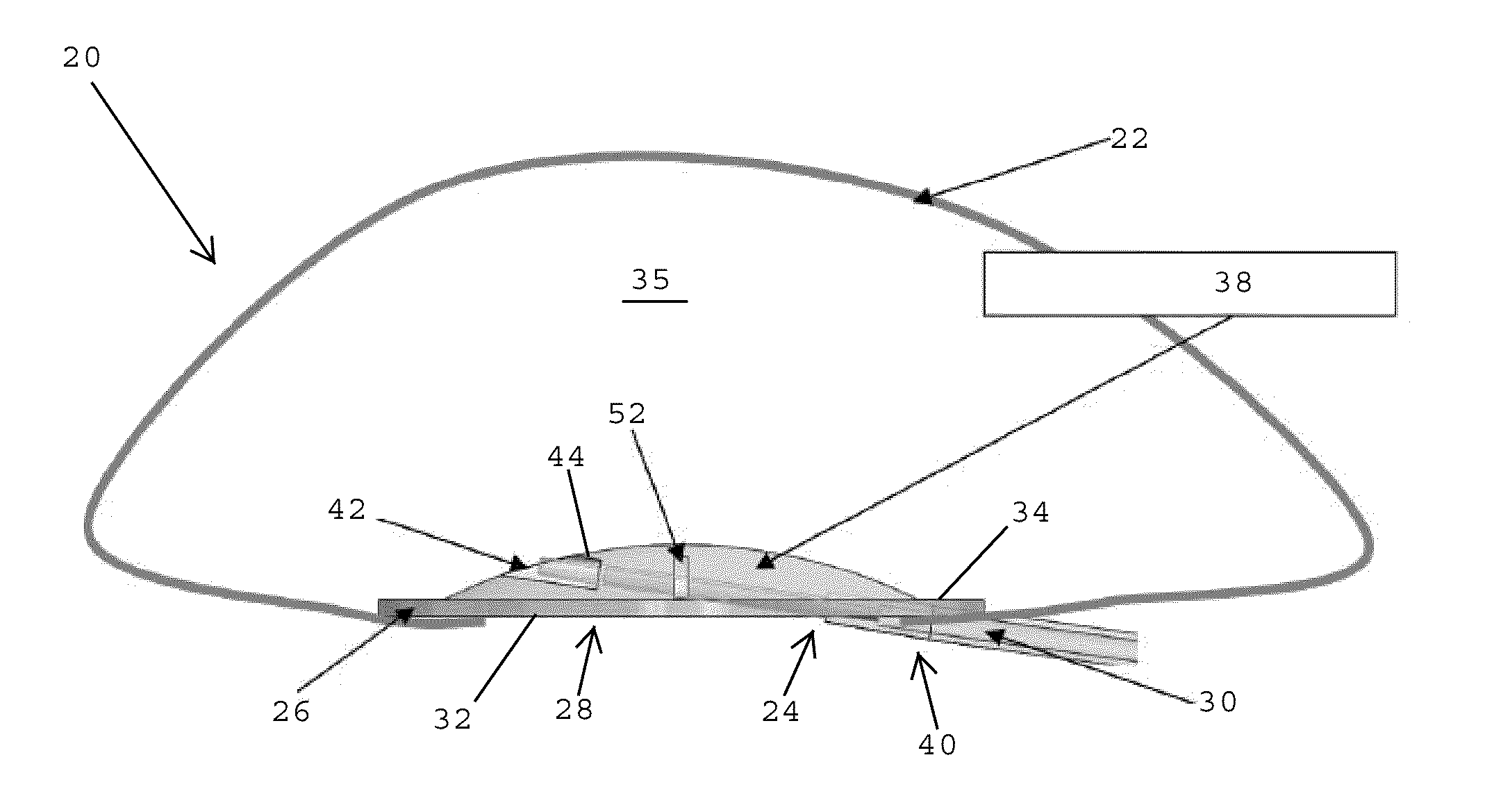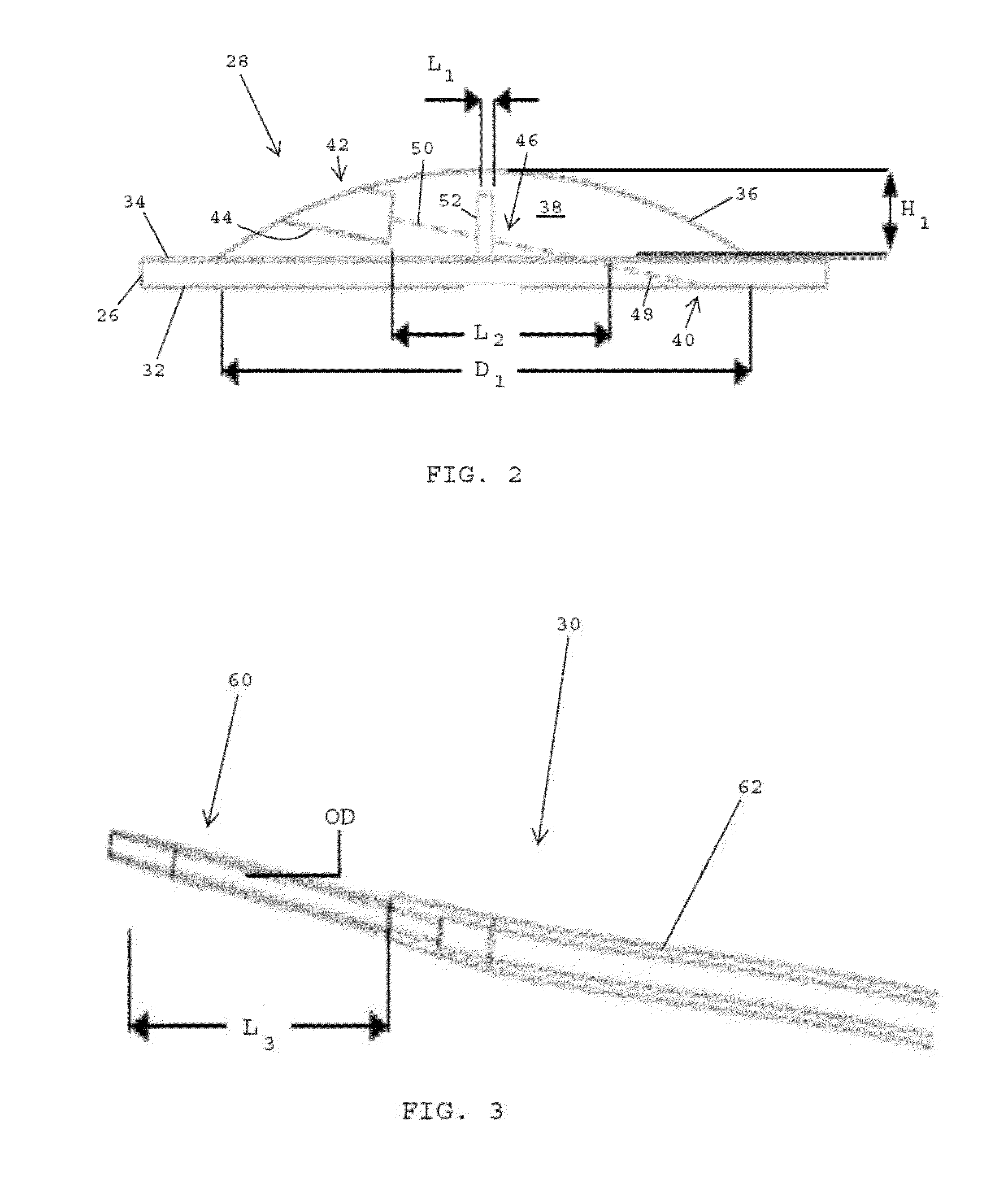Valve assemblies for expandable implants and tissue expanders
a valve and implant technology, applied in the field of medical devices, can solve the problems of insufficient interior fluid pressure to prevent leakage, large valves used in these implants, and inability to adjust the implants, etc., and achieve the effect of small volumetric space and minimal likelihood of fluid leakag
- Summary
- Abstract
- Description
- Claims
- Application Information
AI Technical Summary
Benefits of technology
Problems solved by technology
Method used
Image
Examples
Embodiment Construction
[0039]Referring to FIGS. 1A and 1B, in one embodiment, an expandable implant 20, such as a breast implant or tissue expander, preferably includes an outer shell 22 made of a flexible, biocompatible material such as silicone. The outer shell 22 is adapted to be filled with a solution, such as a saline solution, silicone gel, foam, or combinations thereof. The outer shell 22 desirably has an opening 24 that is closed by a biocompatible patch 26 of a valve assembly 28. In one embodiment, the valve assembly 28 is adapted to receive a filling tube 30 that enables the biocompatible solution to be added to or withdrawn from the outer shell 22 for adjusting the size of the expandable implant 20.
[0040]Referring to FIGS. 1B and 2, in one embodiment, the valve assembly 28 desirably includes the biocompatible patch 26 that is secured to the opening 24 of the outer shell 22 of the expandable implant 20 (FIG. 1B) to close and seal the opening in the outer shell. The patch 26 desirably includes an...
PUM
 Login to View More
Login to View More Abstract
Description
Claims
Application Information
 Login to View More
Login to View More - R&D
- Intellectual Property
- Life Sciences
- Materials
- Tech Scout
- Unparalleled Data Quality
- Higher Quality Content
- 60% Fewer Hallucinations
Browse by: Latest US Patents, China's latest patents, Technical Efficacy Thesaurus, Application Domain, Technology Topic, Popular Technical Reports.
© 2025 PatSnap. All rights reserved.Legal|Privacy policy|Modern Slavery Act Transparency Statement|Sitemap|About US| Contact US: help@patsnap.com



